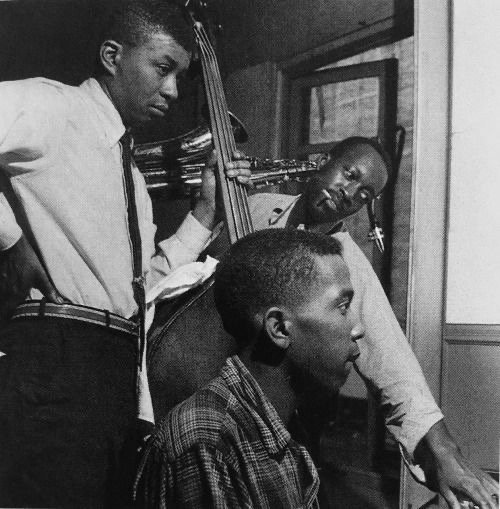Dive into the Power & Passion of ‘Tenor Madness
In the vast panorama of jazz, Sonny Rollins’ “Tenor…
Sonny Clark, born on July 21, 1931, in the coal-mining town of Herminie, Pennsylvania, dazzled the jazz world with his virtuosity. Though his life was tragically cut short, his indomitable spirit and timeless music continue to inspire generations of musicians.

Young Conrad Yeatis “Sonny” Clark’s earliest musical experiences were shaped by his father’s organ playing and the rich sounds of Bud Powell and Art Tatum. These early influences nurtured his prodigious talent, setting the stage for a career that would span the vibrant landscapes of jazz.
Venturing to the West Coast, Clark’s musical prowess flourished as he collaborated with saxophonist Wardell Gray and vibraphonist Teddy Charles. His hard bop stylings, a blend of blues, gospel, and bebop, resonated with audiences and fellow musicians alike, establishing his reputation as a pianist to watch.

In 1957, Clark arrived in New York City, a mecca for jazz where he would further refine his artistry. Collaborating with luminaries such as Art Farmer, Curtis Fuller, and Hank Mobley, Clark’s musical voice matured, his unique sound capturing the essence of the hard bop era.
“Dial ‘S’ for Sonny” (1957) marked Clark’s debut album, and it did not disappoint. Tracks like “Shoutin’ on a Riff” and “Love Walked In” showcased his dexterity and harmonic sophistication, while the presence of Art Farmer, Hank Mobley, and Louis Hayes highlighted Clark’s ability to thrive among jazz greats.
“Sonny’s Crib” (1957) further cemented Clark’s status as a creative force in the hard bop scene. The album featured iconic musicians John Coltrane, Donald Byrd, and Paul Chambers, their contributions intertwining with Clark’s prodigious playing. Standout tracks like “With a Song in My Heart” and “Speak Low” demonstrated Clark’s knack for inventive arrangements and captivating improvisation.
The seminal “Cool Struttin'” (1958) captured the essence of Clark’s artistry, with its eponymous track becoming a hard bop classic. The album also boasted the talents of Jackie McLean, Art Farmer, and Paul Chambers, their playing merging seamlessly with Clark’s. “Blue Minor” and “Sippin’ at Bells” remain as shining examples of his skill as a composer and pianist.
Other significant recordings include “Leapin’ and Lopin'” (1961), an album that showcases Clark’s imaginative compositions, and “Sonny Clark Trio” (1957), a testament to his mastery of the piano trio format. These recordings, alongside his enduring jazz standards, solidify his legacy as a composer and performer.
Clark’s playing style possessed a bluesy feeling, underpinned by a relentless rhythmic drive and an intricate harmonic sensibility. His technique on the piano displayed a clarity of articulation and fluid phrasing, making each note sing with purpose and emotion. Clark’s impact on jazz was transformative, inspiring countless musicians to embrace the hard bop idiom.

The tragic circumstances of his death on January 13, 1963, sent shockwaves through the jazz community. The loss of such a promising talent left many wondering what heights Clark could have reached had his life not been cut short.
In conclusion, Sonny Clark’s importance and influence in jazz cannot be overstated. His contributions to the hard bop era, embodied in his enduring albums and compositions, continue to shape the jazz landscape. Though he may be gone, the spirit of Sonny Clark’s music lives on, a testament to his immeasurable talent and the indelible mark he left on the world of jazz. The albums he created, the musicians he collaborated with, and the legacy of his compositions serve as an eternal reminder of the genius that was Sonny Clark.

Sonny Clark’s influence permeates the music of those who came after him, his spirit infused in their explorations of the hard bop genre. The pianists who have followed in his footsteps, like McCoy Tyner, Chick Corea, and Cedar Walton, have built upon the foundation he laid, pushing the boundaries of jazz and expanding its horizons.
In the annals of jazz history, Sonny Clark’s name will forever be synonymous with the hard bop movement, a testament to his unwavering dedication to his craft and the timelessness of his art. It is our duty as fans and musicians alike to honor his memory by continuing to explore the depths of his music and to share his story with future generations.
Let us remember Sonny Clark not only for the brilliant pianist and composer he was but also for the indelible influence he had on the world of jazz. Through his music, we can catch a glimpse of the man behind the keys, his passion and artistry forever immortalized in the notes that continue to resonate in our hearts and minds.